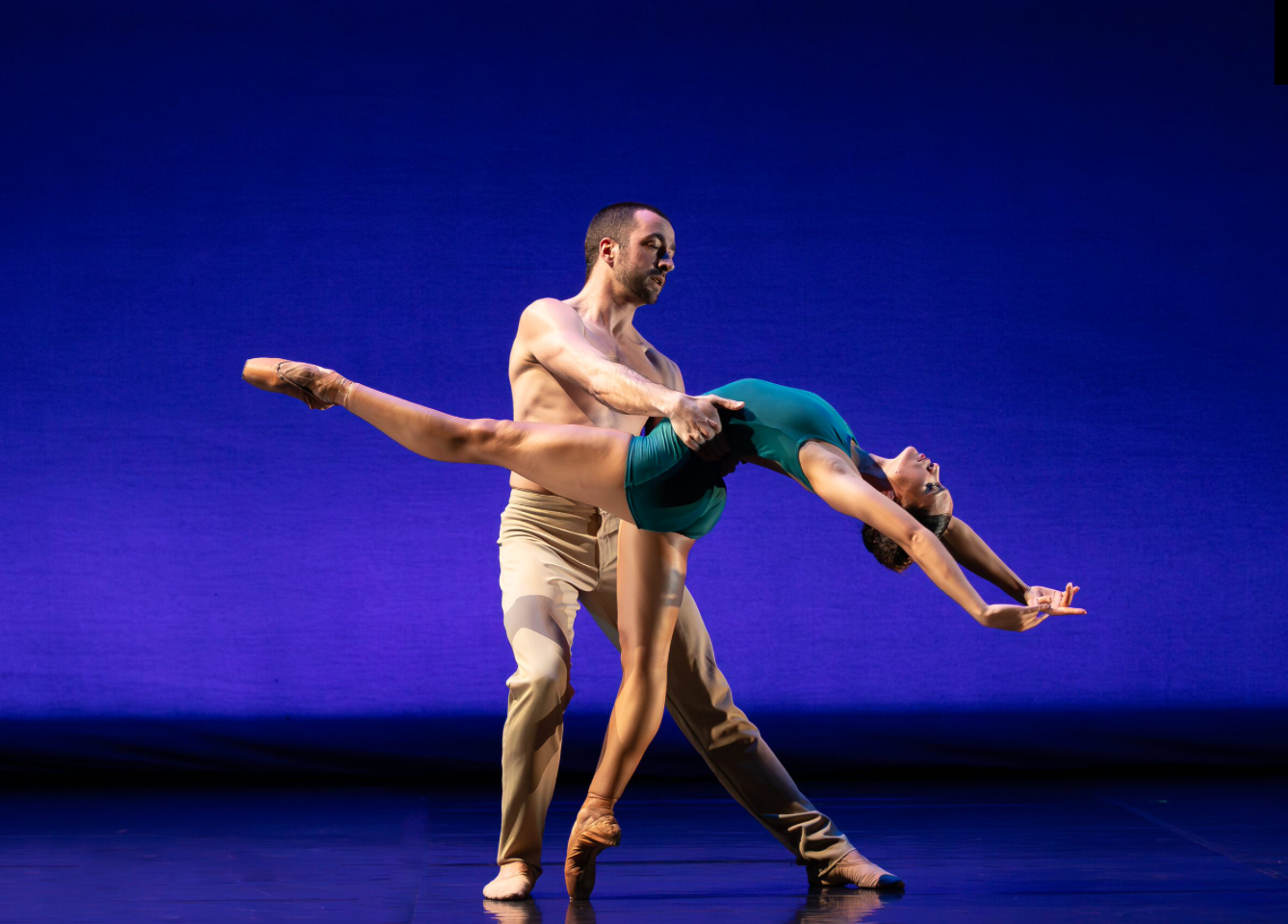Ballet Ireland’s Bold Moves programme has impressed audiences since 2019, but the show has become historical this year. It might have begun with the purpose of bringing contemporary ballet to the Irish audience, but now it has flourished into an annual event that welcomes choreographers and dancers from across the globe. This year, featuring Walking Mad, by Johan Inger, and Stepping Over, by Filipe Portugal, Bold Moves demonstrates how far Ballet Ireland has come, achieving the perfect balance between innovative and classical performances.
It takes a significant amount of financial investment to make a programme like Bold Moves even possible. Not only do ballet companies pay for the lighting, costume, and stage crews, not to mention the casting, rehearsal, and dancers, but they also pay for the choreography itself. However, to be able to acquire choreographers like these, a ballet company has to be of a certain standard. With the permission to perform choreography by Inger, who is an internationally renowned Swedish choreographer, Ballet Ireland has proven to be capable both economically and talent-wise.
“No amount of fancy footwork can sidestep the amorality of performing Minus 16 while Israel commits genocide”
The original line-up for Bold Moves 2024 included Ohad Naharin’s Minus 16. However, the Apartheid Free Dance group opposed the performance, stating that they “find it deeply troubling that Ballet Ireland intends to present Minus 16, a work choreographed by Ohad Naharin, an Israeli-state-funded choreographer.” They argued that “no amount of fancy footwork can sidestep the amorality of performing Minus 16 while Israel commits genocide.” Their statement also underlined Naharin’s acceptance of Israeli government funding, his former status as an Israel Defence Forces (IDF) soldier, and his employment of former and serving IDF soldiers. On March 14th, Ballet Ireland withdrew Minus 16 from the programme, stating that they “stand by the right to freedom of artistic expression, and despite [their] belief that art should not be drawn into politics, [they] feel the time is not right to be performing this work”. They additionally highlighted that Naharin’s Minus 16 has the theme of inclusion and has been performed all over the world for the past 25 years by a number of dance companies. Although Minus 16 was, already in 2019, licenced and scheduled for 2024, Ballet Ireland acknowledged “that the situation is very different now”.
The other two pieces in the line-up that were performed, Walking Mad and Stepping Over, were beautiful. Stepping Over is a classical piece with dancers dressed in light beige and blue, reminiscent of the ocean. It is a piece performed by 16 dancers, with a featured pas-de-deux (like a duet dance in ballet). There are also a lot of canons where sequences ripple through dancers. But my favourite part was an elegant sequence toward the middle of the performance, in which black figures dancing against a deep blue background, one by one, positioned themselves in a line. Every time a new dancer passed by them to join said line, they changed their position.
“My favourite sequence included a female dancer backed up into the corner, produced by the wall being folded in half at an angle, which made her disappear into the darkness”
In contrast, Walking Mad was a mixture of neoclassical or contemporary ballet about different fears in which a long two-metre-tall wall was used as a prop. Despite its doors that could fly open and close, the wall could be lowered to the ground to become a dance floor, moved around thanks to its wheels, or folded in half. Thanks to this wall, the performance was incredibly unique, as it provided a diversity of settings. My favourite sequence included a female dancer backed up into the corner, produced by the wall being folded in half at an angle, which made her disappear into the darkness, and, once it did, the music suddenly stopped. Then three male dancers, one by one, started dancing with her as if fighting, which was particularly enthralling. It was not pretty dancing like Stepping Over, but rather discomforting. There were loud noises, and eerie laughter, that interrupted the flow of the female dancer being thrown against the wall. Throughout the performance, the wall was climbed on and, very significantly, towards the end of the piece, jumped off of, after which no thump could be heard – as if the world had gone quiet.
“Modern dance is an experience that relates human beings to other human beings'”
Both pieces were beautiful; Stepping Over was aesthetically beautiful, whilst Walking Mad was beautiful thanks to its plot. More importantly, both pieces were about human connection. As the rehearsal director for this year’s Bold Moves expresses, there are “so many things that would help Ireland [like] communities realising that modern dance is, first of all, an experience that relates human beings to other human beings.”






